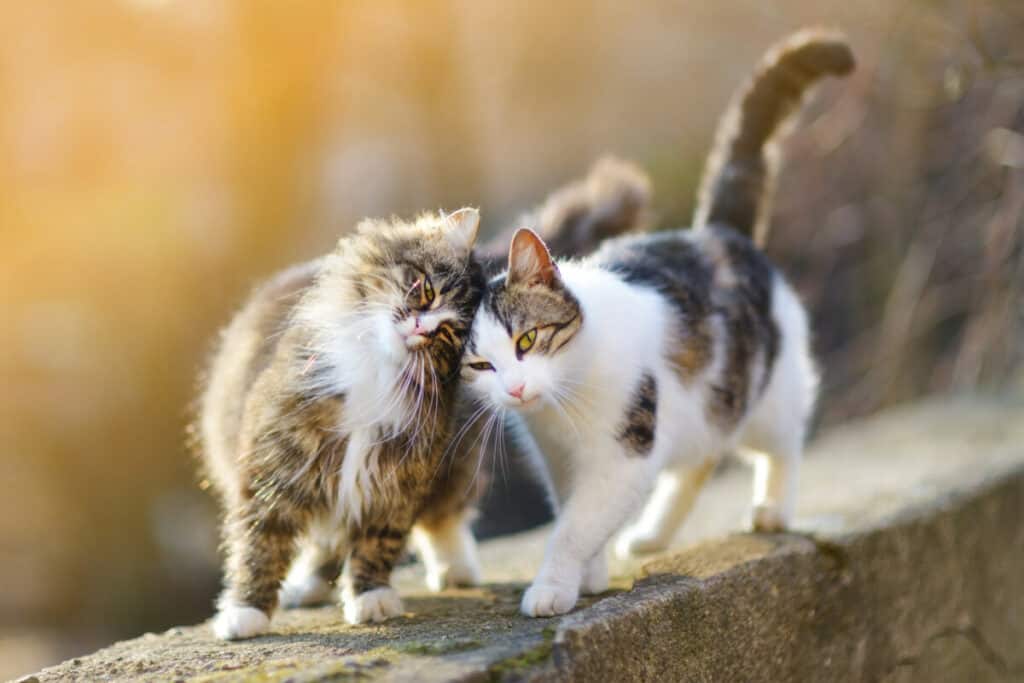
When talking about cats, coats are always mentioned. Because of colour, hair length, and amount of shedding, they are often a serious draw or flaw for potential cat owners, and the undercoat is no different. What, exactly, is an undercoat?
Most cat breeds will have an undercoat, except for hairless breeds like Sphinx, Bambino, Donskoy, and Peterbald cats and Rex breeds. A cat’s coat is formed of different types of hair, guard hairs, awn hairs, and down hairs that vary in length and thickness depending on breed.
Below is more information on cat undercoats and the different types of hair a cat might have.
What Is a Cat Undercoat?
Normally, when the topic of undercoats comes up, people think of dogs. The average cat buyer isn’t expecting their new feline friend to have an undercoat that might create complications. Luckily, cat undercoats have a simple purpose and a simple solution.
Undercoats are soft, downy hairs that are close to the skin and help provide more insulation. The undercoat is there to help cats regulate their body temperature as the seasons change and keep them warm no matter their environment.
Now that undercoats have been covered let’s talk about another layer of fur: the topcoat. The topcoat is made of the longer, tougher hairs a cat grows and is there as a protective layer. While it does help keep cats warm, the topcoat primarily functions as protection or shielding for the cat’s skin.
Together, the topcoat and undercoat make up a cat’s full coat and are there to keep cats happy and healthy.
The undercoat lays close to the skin, and the topcoat grows out over it, kind of like someone wearing a fleece lining inside a heavy-duty winter coat.
When people say a cat is “double-coated,” they mean that they noticeably have a topcoat and undercoat. Often they simply mean longhaired cats, as they shed more and require more consistent grooming.
So, while your cat may not be classified as "double-coated," they'll still have an undercoat (except for hairless breeds).
Have you ever wondered if dogs or cats shed more? I wrote a whole post about it linked below!
Read Now: Do Dogs Shed Less Than Cats? List of Top Shedders Included
Different Types of Hair and Layers of Fur
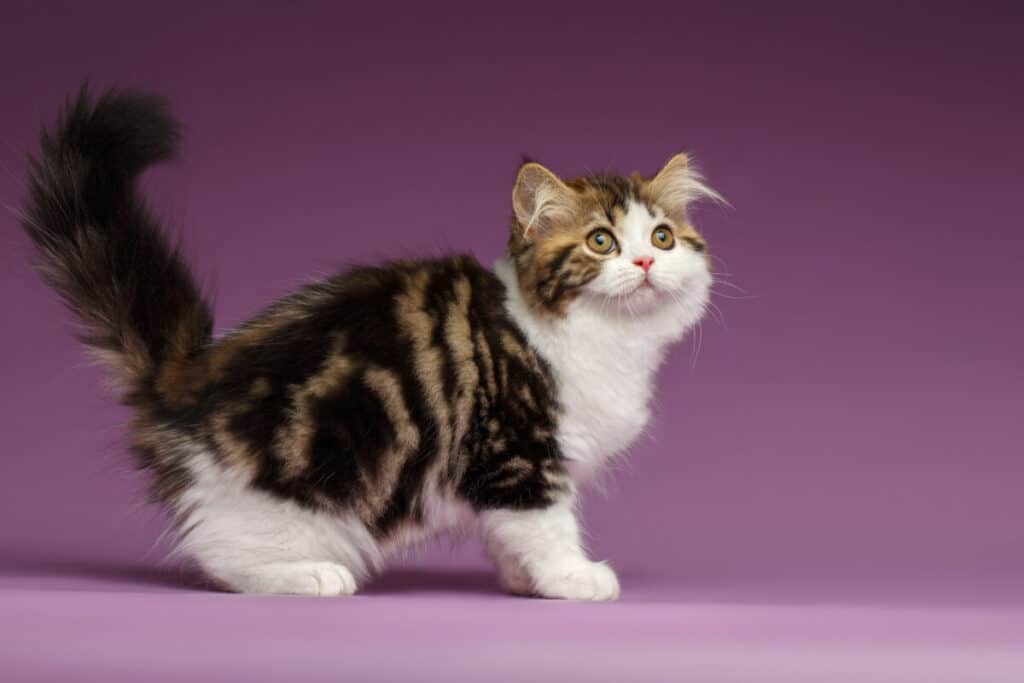
In the cat’s coat, there are generally going to be three main types of hair: guard, down, and awn. All three have various functions and are there to help maintain the cat’s health and protection.
Additionally, there are two other types of cat hair: vibrissae and vellus.
Guard Hairs
Guard hairs are the longest, stiffest hairs a cat will grow.
They make up the outer layer of the cat’s coat and provide protection from water and sunlight, and often act as another way for a cat to sense different stimuli in its immediate surroundings.
The length of guard hairs varies depending on breed, but all cats will have guard hairs, except for hairless and Rex breeds, to keep their skin safe from irritants. Guard hairs also determine a cat’s coat colour.
All cats have guard hairs, but kittens won’t, so don’t be alarmed if your new kitty doesn’t seem to have this coarse outer layer.
The transition
from baby hair to the adult coat begins anywhere between 6 months and 1 year after they’re born.
Down Hairs
Down hairs are short, fluffy hairs that grow close to the body and make up the undercoat. They are primarily responsible for insulation and helping the cat regulate their body temperature.
Down hairs will be either wavy or curly and grow more densely than guard and awn hairs in order to better fulfill their function.
Because down hairs are curly and grow close together, they tend to mat.
Keep an eye out for these when brushing your cat, and make sure the brush used has bristles that will reach all the way down to the skin so the guard hair and down hair are both getting brushed.
Getting a brush that targets these hairs is important. I personally use the FURminator (Amazon link) and have found it is by far the best brush I have used to target all the different hair layers. They sell different sizes, but I prefer the smaller size for my ragdolls because it can fit around their legs/armpit areas well.
and have found it is by far the best brush I have used to target all the different hair layers. They sell different sizes, but I prefer the smaller size for my ragdolls because it can fit around their legs/armpit areas well.
Awn Hairs
Between guard hairs and down hairs is a layer of awn hairs , which grow to be longer than down hairs but shorter than guard hairs. They make up part of the topcoat in addition to the guard hairs and provide the majority of the visible fur on a cat.
, which grow to be longer than down hairs but shorter than guard hairs. They make up part of the topcoat in addition to the guard hairs and provide the majority of the visible fur on a cat.
Awn hairs are also a go-between of the functions of guard and down hairs. Like guard hairs, they provide protection from radiation from sunlight and from water, and like down hairs; they help with insulation.
Sometimes awn hairs are referred to as a third layer between the topcoat and undercoat; subsequently, a cat with awn hairs in its coat might be called triple-coated. While this is correct in that there are three different types of cat hairs, awn hairs are agreed to be part of the topcoat.
Vibrissae
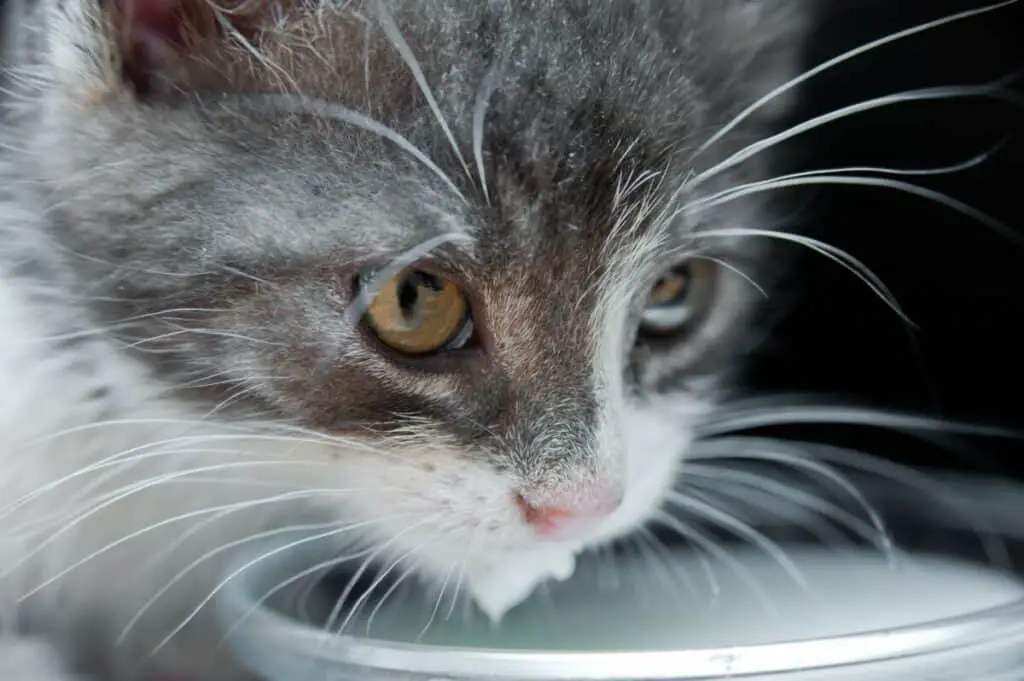
Vibrissae may sound like something strange and alien, but it’s just the scientific word for whiskers or tactile hairs on the face.
may sound like something strange and alien, but it’s just the scientific word for whiskers or tactile hairs on the face.
For cats, vibrissae are long, thick hairs that grow from the muzzle, the cheeks, above the eyes, and the outside of the lower leg.
Because they’re much longer and thicker than any other type of hair a cat grows, they function in a very specific way. They are extremely sensitive and help cats move around in their environment.
The follicle for a whisker is a hub for nerves and blood vessels so that the different stimuli the whiskers detect get properly conveyed to the cat’s brain.
Much like bats using echolocation to assess their surroundings, cat whiskers pick up on changes in the airflow around them and vibrate accordingly, stimulating the nerves in the follicle and sending messages to the brain.
Because of how sensitive they are, cats use their whiskers to “feel” the world around them, much like we would use our fingertips.
Whiskers help cats detect all sorts of things: how wide an opening is, where things are in the dark, if there’s debris in the air that could get in their eyes, what position their body is in (to help with balance), or if there’s something in their path, like long grass or a thorny plant.
Whiskers are integral to a cat’s life, so be careful of them! Don’t cut them when grooming; if you’re going to touch them, be gentle and go with the grain.
Vellus
The last type of hair cats can have are vellus hairs. Sparse and baby-fine, vellus hairs and most noticeable on hairless cats like the Sphynx . To the touch, cats who primarily have vellus hairs will feel suede-like. They’ll help provide insulation and wick away sweat.
. To the touch, cats who primarily have vellus hairs will feel suede-like. They’ll help provide insulation and wick away sweat.
Vellus hairs might sound familiar, and for a good reason: humans also have vellus hairs all over the body except for on the palms of the hand, the soles of the feet, eyelids, and lips. We call it peach fuzz.
Coat Types
Because there are so many types of hair cats can have, there are also a variety of coat types.
Hairless
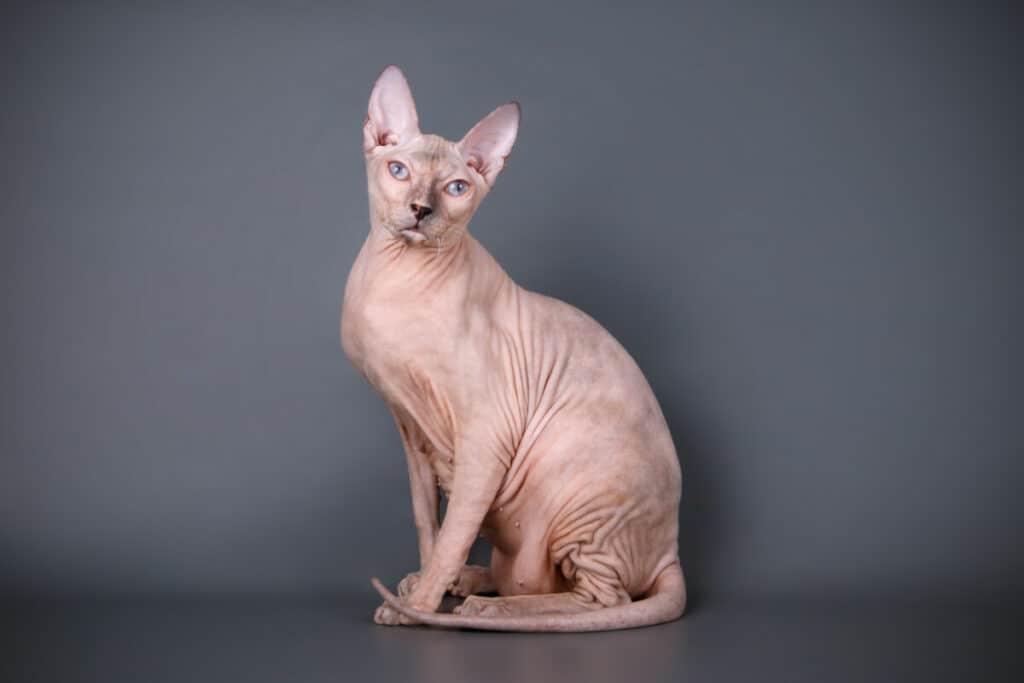
Hairless cats are a specific variety that developed through selective breeding. The first recorded appearance of a hairless cat was in Canada in 1966, but there’s speculation that breeding for hairlessness went back as far as the 1300s.
Hairlessness is due to a recessive gene that impacts hair formation (except for Donskoy hairless cats, who came about because of a dominant gene).
Hairless cats aren’t actually hairless. They’ll still have whiskers and vellus hair but won’t develop a full-fledged coat of any kind.
Many people often think that hairless cats are automatically hypoallergenic, but hairless cats still produce allergens in dander and saliva.
Hairless breeds include:
- Sphynx
- Bambino
- Minskin
- Donskoy
- Peterbald
- Ukrainian Levkoy
- Elf
- Dwelf
Curly cat coats
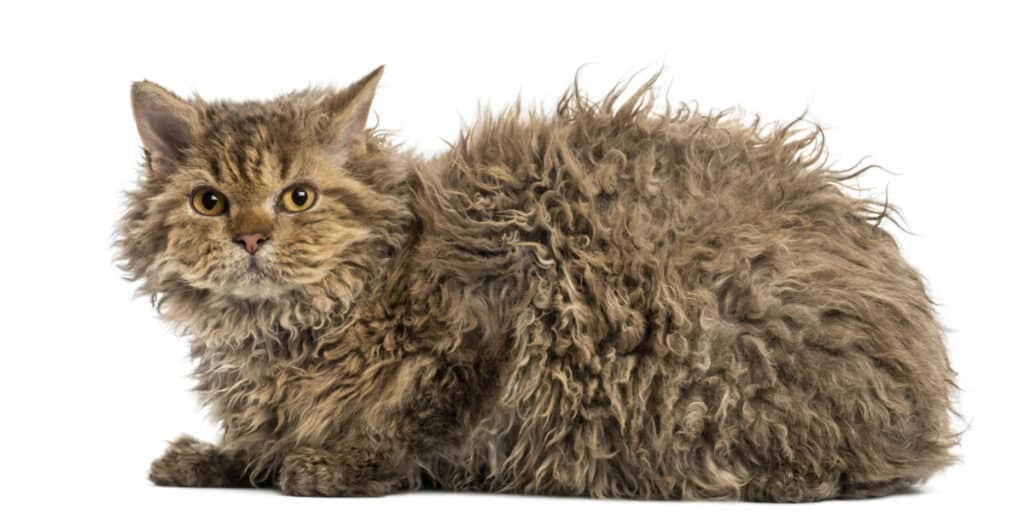
Cats with curly hair are rather hard to find because they result from a genetic mutation that is widely known as the Rex mutation.
are rather hard to find because they result from a genetic mutation that is widely known as the Rex mutation.
The best-known cats with curly hair are the Devon and Cornish Rex breeds, which came about in Devon and Cornwall in 1960 and 1950. These two Rex breeds are the result of a recessive gene mutation and, subsequently, are harder to find and more expensive to buy than a traditional straight-haired cat.
Two other internationally recognized curly-haired breeds are the Selkirk Rex and the LaPerm.
Selkirk Rex cats originated in the 1980s in Montana, and LaPerm cats were first found in Texas in 1982. Both of these breeds have curly hair because of a dominant gene mutation but they are still rare and expensive.
Other curly-haired breeds include:
- Skookum
- German Rex
- Tasman Rex
- Ural Rex
- Tennessee Rex
These breeds aren’t officially recognized by the International Cat Association or the Cat Fancier’s Association, so they aren’t “truly” curly-haired cats, but they descend from the recognized breeds and have their own distinct characteristics.
or the Cat Fancier’s Association, so they aren’t “truly” curly-haired cats, but they descend from the recognized breeds and have their own distinct characteristics.
Short
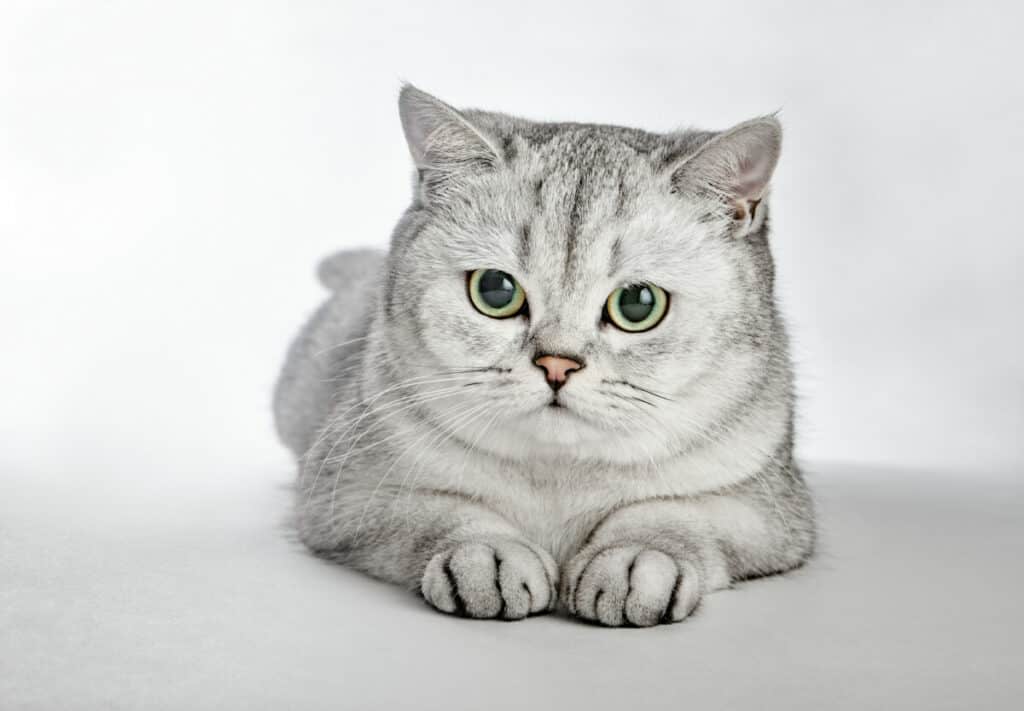
Shorthaired cats are cats with short hair.
They’ll have both the topcoat and the undercoat and do still shed, contrary to popular belief, though not as much as longhaired cats. The longest a shorthaired cat’s coat will get is two inches long. Anything more than that, and they’re not a shorthaired cat.
Shorthaired cats are the most common type of domesticated cat, so the majority of cats you’ve seen are probably shorthaired. Breeds classified as shorthaired are plentiful and can overlap with curly and hairless breeds. By no means an exhaustive list, here are some shorthaired breeds:
- Abyssian
- American Shorthair
- American Wirehair
- Bengal
- Bombay
- British Shorthair
- Burmese
- Chartreux
- Cornish Rex
- Devon Rex
- Egyptian Mau
- Japanese Bobtail
- Korat
- Manx
- Ocicat
- Oriental Shorthair
- Russian Blue
- Scottish Fold
- Siamese
- Sphynx
- Tonkinese
Long
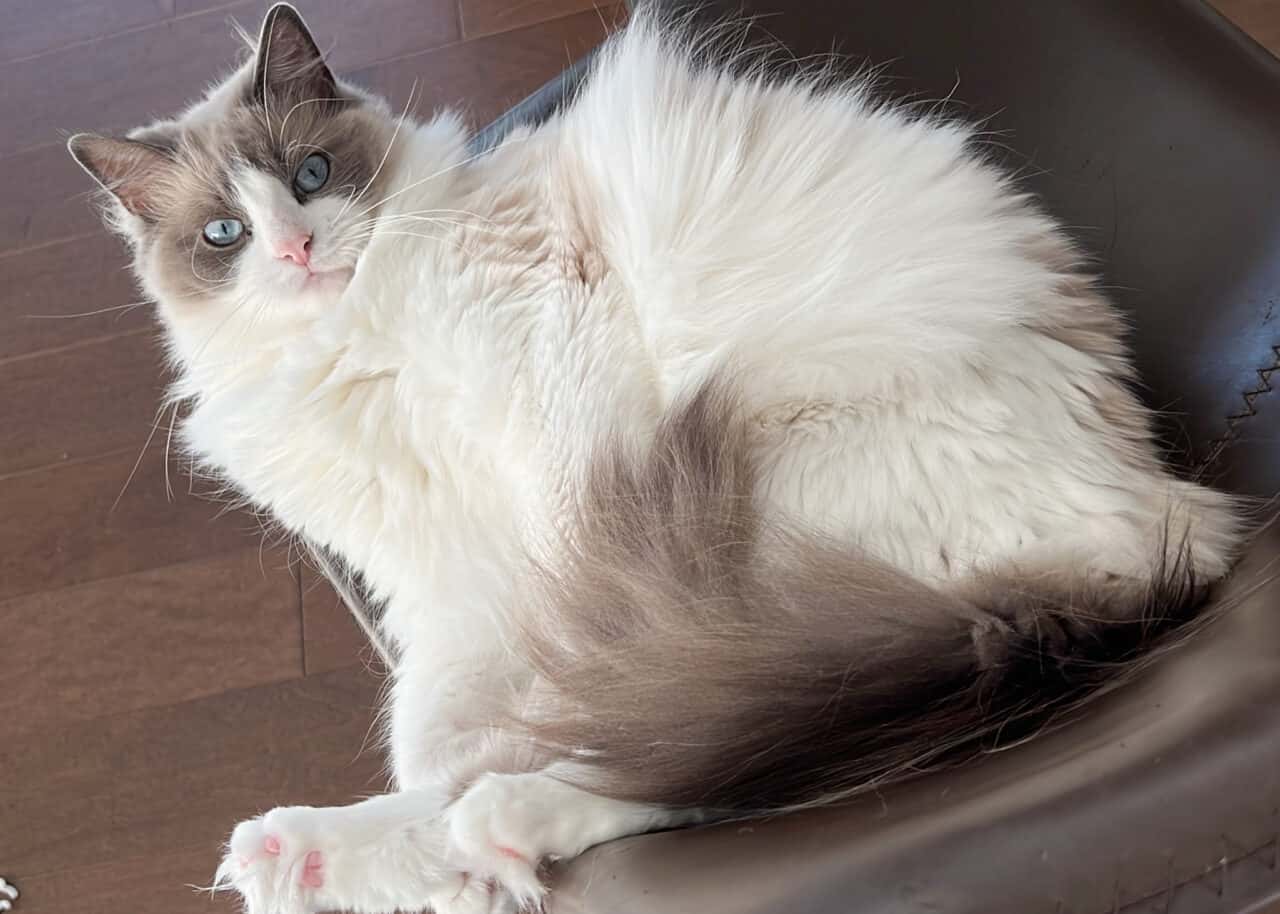
Long hair in cats comes from a recessive genetic mutation , like curly-haired and hairless cats, but longhaired cats are really common. They have a lot more hair than other types of cats, shed more, and need more grooming than cats with other kinds of coats.
, like curly-haired and hairless cats, but longhaired cats are really common. They have a lot more hair than other types of cats, shed more, and need more grooming than cats with other kinds of coats.
Like shorthaired cats, the different types of longhaired cats are plentiful and can cross over into those breeds with curly hair as well. Here’s a list of some longhaired cat breeds:
- Balinese
- Birman
- Cymric
- Himalayan
- Javanese
- Maine Coon
- Norwegian Forest
- Persian
- Ragdoll
- Somali
- Turkish Angora
Grooming; improve health and reduce clean up
Grooming for cats is beneficial for everyone involved all around. It helps improve a cat’s health and helps reduce the amount of cleanup of shed hair and dander.
You might think that because cats groom themselves, there isn’t anything else you need to do for them, but that’s hardly the case. Basic grooming would include brushing, bathing, nail clipping, teeth brushing, and ear and eye cleaning.
would include brushing, bathing, nail clipping, teeth brushing, and ear and eye cleaning.
Beyond that, regular checkups at the vet will also help keep your cat healthy.
Brushing a cat’s coat help keeps it clean and healthy. Regular brushing helps remove dirt, dead and loose hairs, skin flakes, and grease and also stimulates blood circulation, which helps with skin health.
When it comes to brushing, do the following:
- Check their coat. Healthy coats will be shiny and glossy and bounce back under a touch. This coat inspection provides an opportunity to check for mats, irregular shedding that could originate from health problems, and any nasty hitchhikers your cat might’ve picked up, so look for unusual lumps, fleas and ticks, bald patches, and possible injuries.
- Shorthaired cats should be brushed with a metal comb. Brush all of their body from head to tail. Make sure to get their chest, abdomen, armpits, and other places where their fur regularly rubs against itself. Divide their fur into sections and go one at a time, getting out all the tangles and brushing in the direction the hair goes. For loose, dead hair, rubber brushes can be especially effective in its removal on shorthaired cats. Brush your cat once or twice a week.
- Longhaired cats should be brushed once every day. Use a metal brush with long bristles to reach all the way to the bottom of the coat and brush everywhere. Divvy up the coat into different sections and go one section at a time to remove as many tangles as possible. Make sure to brush the chest, abdomen, and any areas where fur rubs against itself and can get tangled or matted.
Regular brushing will remove loose, dead hair and help decrease the amount of hair that winds up being shed or collected in your cat’s self-grooming. Remember to always be gentle.
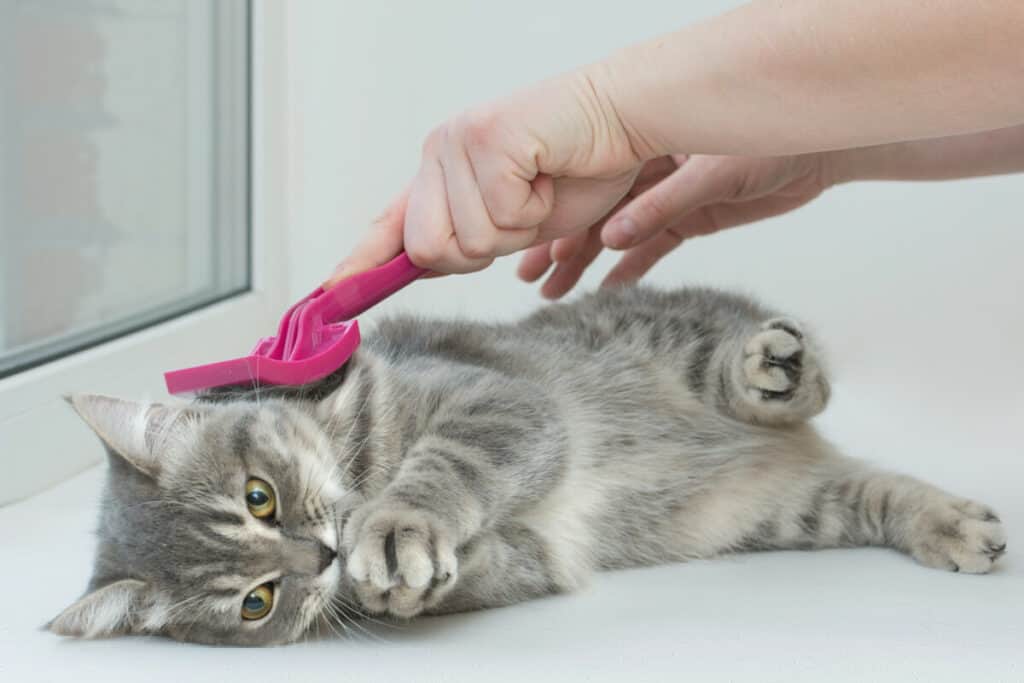
Undercoats are especially susceptible to mats as it lies under the guard hairs and easily get tangled. Mats can be really painful for cats, so removing them is essential to keeping a cat healthy and happy.
is essential to keeping a cat healthy and happy.
Do the following to remove mats on your cat.
- Collect blunt scissors, a fine-toothed comb, and cornstarch or talcum powder. Make sure your cat is relaxed before you start, and don’t wash them before mat removal–washing makes mats worse.
- Sprinkle cornstarch or talcum powder in the area where the mat is, work it into the fur, and gently pull the mat away from the skin.
- Carefully, going from underneath the mat, slide your scissors into the mat so they’re perpendicular to the skin, then cut up into the mat. Move over a little bit and cut again. This separates the mat into different sections and makes it easier to work out. Make sure your cuts are clean and that you don’t pull the hair while you’re cutting.
- Take one of the separated pieces, hold it at the base near the skin to prevent the comb from pulling hairs out, and start combing the tip of the mat. Go gently and slowly, making sure the section is all untangled before moving closer to the base. Comb the other sections once the first is detangled.
If a mat is serious enough to consider shaving off, take it to a professional groomer or veterinarian rather than doing it yourself.
Shaving a cat should be your last resort
.
Linked below is a post I wrote discussing hair regrowth timelines after shaving (including regrwoth after surgery).
Read Now: How Long Does It Take Cat Fur To Grow Back After Surgery?
Undercoats and topcoats grow at different rates, and shaving a cat will leave them unable to properly regulate their temperature and unprotected from the sun and other skin irritants while they wait for the topcoat to grow back.
I hope you find this information valuable,
Holly 🙂
